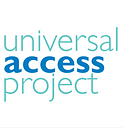One Of The Planet’s Most Powerful Forces For Change? An Adolescent Girl
By Seema Jalan
Take a moment to think about what your life was like when you were 10 years old. What was your favorite subject in school? What did you want to be when you grew up? What opportunities were ahead of you that led you to where you are today? I was a shy, curly-haired girl with dreams of being an astronaut, a Supreme Court justice and a cartoonist.
The truth is, a 10-year-old girl is one of the most powerful people on the planet. She has the potential to shape our entire future. At the same time, she is often the most vulnerable. In many places around the world, the path to achieve her full potential is ridden with obstacles. Of an estimated 60 million 10-year-old girls on the planet today — more than the entire population of Italy — 40 percent are at risk of being left behind by our global development investments. This means they are systematically excluded from accessing services like health care, education, or jobs, which violates their basic rights and takes a toll on their families, communities and countries. Whenever a girl’s potential goes unrealized, we all lose.
Why age 10? This is the age at which the life path for boys and girls really begin to diverge. For millions of girls, their life choices begin to restrict, whereas for boys, they expand. What is happening in a girl’s home, community and country at this age all impact the trajectory of her life. There are two pathways for this girl. At age 10, she may be treated as an asset for work, sexuality and fertility and be denied any say in decisions about her life. She may be forced into marriage, or to stop attending school, or onto a pathway for early motherhood. Her future is no longer hers. Or she may be empowered to exercise her rights, to stay healthy, to complete her education, and to make decisions about her own life — including if and when to have children. Which path she takes depends on the support she receives from the global community and the power she has to shape her own future.
What the world will look like in 15 years will depend on what we do to ignite the potential of today’s 10-year-old girls. And a key pathway is sexual and reproductive health and rights. If a girl can delay an unintended pregnancy as a child herself, she can stay in school and eventually pursue a job — unlocking a whole spectrum of opportunity for her future and that of her family. Delaying pregnancy and childbirth will also significantly increase her chances of having a smooth pregnancy, a safe delivery, and a healthy baby. Her empowerment has a ripple effect on the globe: In fact, no country in the last 50 yearshas emerged from poverty without expanding access to contraceptives, a key component of fulfilling sexual and reproductive health and rights.
We’ve all seen this firsthand, whether we realize this or not. Right here in the U.S., access to birth control in the 1960s and 1970s was a crucial intervention in unlocking women’s economic empowerment. In fact, one of the most successful investments the U.S. had made globally for the last 50 years is to support girls and women’s access to sexual and reproductive health, including through comprehensive sexuality education and contraceptive access. It’s not just the right thing to do; it’s the smart thing to do, and it’s the best of American values.
This is not about a girl being a victim. She may be only 10, but she is powerful — and she can use this power to build a better world when she can protect her health and plan for her future. This is about speaking up and saying that her life, her dreams, and her contributions to the world matter. She is counting on us. We have to stand up for her.
Learn more about the Universal Access Project and get involved at www.universalaccessproject.org.
